Kentucky is one of the best places for hunting in the United States. It has a thrilling array of wildlife for hunters, boasting white-tailed deer, wild turkeys, squirrels, rabbits, and waterfowl.
The Kentucky Department of Fish and Wildlife Resources manages several public hunting areas to explore without needing a license – these spots are ideal for all levels.
With over 1 million acres of land open to the sport of hunting across rolling hills and thick forests with sweeping fields providing an abundance of game viewing opportunities.
In this detailed guide, we will cover everything you need to know about hunting in The Bluegrass State. We go over the hunting seasons, what type of animals can you hunt, where to hunt them, and hunting license information.
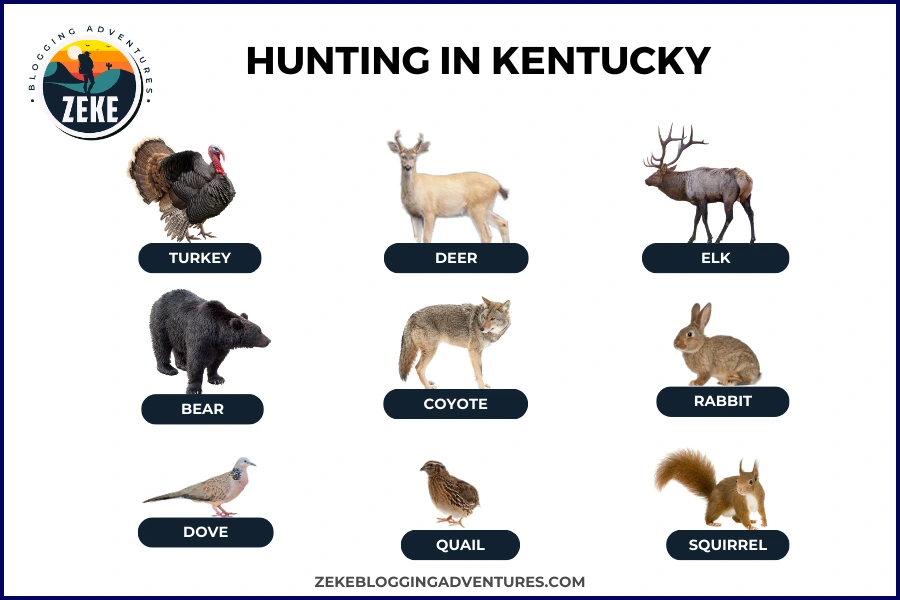
What Can You Hunt in Kentucky?
Hunting in Kentucky is an exciting way to take in the state’s stunning natural scenery and diverse wildlife. From chasing small game to big game hunting, there are plenty of options when it comes to taking on the wilds of Kentucky.
Deer hunting is the most popular type here, but don’t forget about Elk – you’ll find one of the biggest herds east of the Mississippi right here. Turkey, quail, black bear, rabbit, dove, grouse, and waterfowl can all be hunted here for a truly immersive experience.
Deer
For hunters looking to have a successful deer hunting experience, Kentucky is the perfect destination. With its beautiful woodlands and hills, this state provides plenty of chances for success.
The best time to hunt here is during the fall when bucks are actively searching for mates; they’re more visible which makes them easier targets. Additionally, the rutting season usually takes place in late October or early November – another great opportunity for bagging your prey.
When picking a spot in Kentucky, there are several options available. Daniel Boone National Forest offers large tracts of land with abundant wildlife while Big South Fork National River and Recreation Area as well as Cumberland Gap National Historical Park also provide prime deer hunting grounds.
Be sure you’re familiar with local regulations before heading out into the woods: know what weapons are allowed and any restrictions on times or locations that may be applicable to your area. Wearing blaze orange clothing will help other hunters recognize you from afar too.
Deer Season Kentucky
| Season | Dates | Location |
| Archery | Sep 02 – Jan 15 | Statewide |
| Crossbow | Sep 16 – Jan 15 | Statewide |
| Modern Gun | Nov 11 – Nov 26 | Zones 1, 2, 3, 4 |
| Muzzleloader | Oct 21 – Oct 22 | Zone 1, 2, 3 (Either Sex) |
| Muzzleloader | Oct 21 – Oct 22 | Zone 4 (Antlered deer only) |
| Muzzleloader | Dec 09 – Dec 17 | Statewide |
| Youth-Free | Dec 30 – Dec 31 | (Either sex) |
| Youth Only | Oct 14 – Oct 15 | (Either sex) |
Elk
With over 10,000 elks roaming across Kentucky, you’ll have plenty of chances to locate and hunt these grand animals. Boasting some of the best elk habitats in the nation, Kentucky’s lush forests, and rolling hills provide excellent cover for these majestic creatures.
The hunting period for elk in Kentucky begins in September and runs through until December so it is important that you plan accordingly when organizing your trip. If you wish to participate, then acquiring a permit from the Kentucky Department of Fish & Wildlife Resources is essential; as well as familiarizing yourself with their regulations.
When it comes to equipment, making sure that you’re properly equipped is key if we are hoping for success on our expedition. Having a dependable rifle along with quality optics such as binoculars or spotting scopes will be invaluable during this time! Furthermore wearing camouflage clothing coupled with sturdy boots should also be taken into consideration due to its rocky terrain.
Elk Season in Kentucky
| Season | Dates |
| Archery/Crossbow | Sep 09 – Sep 22, Dec 02 – Dec 08 |
| Cow Firearms | Nov 25 – Nov 29, Dec 30 – 03 Jan |
| Bull Firearms | Sep 30 – Oct 04, Oct 07 – Oct 11 |
Turkey
When it comes to turkey hunting in Kentucky, you can’t beat the abundance of public land and wild turkeys. To get started, make sure to purchase a resident or non-resident license online or at any authorized vendor. Before going out on your hunt, check with your local wildlife office for additional regulations that may apply.
With diverse habitats like forests, fields, and swamps, Kentucky has something for everyone when it comes to turkey hunting. Make sure you scout potential areas beforehand and bring all the necessary equipment – decoys and calls are essential.
Familiarize yourself with bag limits and season dates by county as they vary from place to place – don’t forget about checking in with local wildlife offices if needed.
Above all else though: safety first when it comes to turkey hunting in The Bluegrass State. Wear blaze orange clothing so other hunters can spot you easily; plus remember all other state safety guidelines before embarking on your next big turkey hunt.
Turkey Season Kentucky
| Season | Dates |
| Spring Turkey Regular Season | Apr 07 – Apr 08 |
| Spring Turkey Youth Season | Apr 15 – May 08 |
| Fall Turkey Archery | Sep 02 – Jan 15 |
| Fall Turkey Crossbow | Oct 01 – Oct 22, Nov 11 – Dec 31 |
| Fall Turkey Shotgun | Oct 28 – Nov 03, Dec 02 – Dec 08 |
Bear
If you’re looking to hunt black bears in Kentucky, the Appalachian Mountains and Eastern parts of the state are your best bet. Make sure you’re well-prepared with a rifle or shotgun that packs enough punch for bear hunting, as well as camouflage clothing and an effective scent-blocker like spray or gel. Binoculars will also come in handy while scouting for these elusive creatures.
The bear season runs from mid-September through mid-December. Be sure to check local regulations regarding bag limits and size restrictions before setting out into the field.
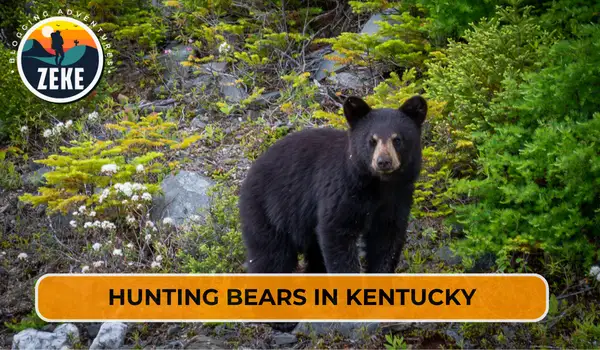
Black Bear Season
| Season | Dates |
| Bear Chase only with Dogs | Jun 01 – Aug 01, Sep 09 – Sep 30 |
| Archery/Crossbow | Oct 28 – Nov 01 |
| Bear Hunt with Dogs | Oct 23 – Oct 27, Nov 02 – Nov 10 |
| Bear Firearm | Dec 09 – Dec 13 |
Rabbit
Hunting rabbits is most successful in areas with thick cover, like briars or native grass. These spots are great because they offer food, cover, and space for the edge species to thrive – while also providing a safe distance from predators.
As an experienced hunter, you know that these areas with corners between field and forest, fence lines, and overgrown building sites can be prime hotspots for multiple rabbit sightings. So if you’re looking to get out into nature this weekend and hunt some critters, look no further than the nooks of dense vegetation.
Rabbit Season
| Season | Dates |
| Eastern Zone | Nov 01 – Jan 31 |
| Western Zone | Nov 13 – Feb 10 |
Quail
Hunting quail in Kentucky is an exciting experience with plenty of opportunities for success. Bobwhite, scaled, and Gambel’s quail are all native species to the state and can be found in numerous locations such as fields, pastures, woodlands, or other open areas.
When hunting these birds during fall months, it’s important to have a good shotgun with the right choke size; 12-gauge shotguns typically work best with modified or improved cylinder chokes.
Also, you should bring along plenty of shells since these swift-flying birds require multiple shots. Don’t forget about safety – wear blaze orange clothing when out in the field and keep your gun unloaded until ready to shoot. Be sure to check local game wardens for restrictions before going on any hunts too.
Quail Season Kentucky
| Season | Dates |
| Eastern Zone | Nov 01 – Jan 31 |
| Western Zone | Nov 13 – Feb 10 |
Dove
Hunting doves in Kentucky can be a great way for a hunter to sharpen their skills. The season typically runs from September 1st through October 31st and then again from December 23rd to January 14th – prime times for finding plenty of the birds perched in fields or woodlands across the state.
To ensure success, having a reliable shotgun is essential; 20-gauge or 12-gauge with modified chokes are best suited for taking down active doves. Early morning and late afternoon are usually when these birds will be most active, so plan accordingly if you want some easy kills.
Dove Season
| Season | Dates |
| 1st Segment | Sep 01 – Oct 26 |
| 2nd Segment | Nov 23 – Dec 03 |
| 3rd Segment | Dec 23 – Jan 14 |
Squirrel
To effectively hunt squirrels in The Bluegrass State, you must know what they eat. Generally, their diet consists of nuts from trees that vary by location and species; however, acorns from red oak are usually the last to be consumed after all other options have been exhausted due to containing tannin.
To find a good spot for gray squirrels in particular, look out for hickory, beech, black walnut, or white oak trees near cornfields — an ideal environment for fox squirrels as well. Unlike other animals which require access to water sources in order to stay hydrated and healthy; squirrels can fulfill their needs with food alone.
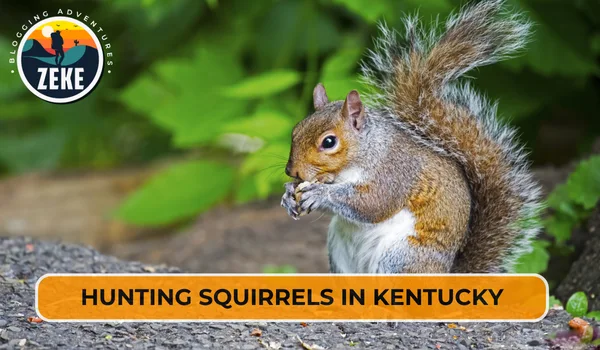
Squirrel Season in Kentucky
| Season | Dates |
| Spring | May 20 – Jun 16 |
| Fall | Aug 19 – Feb 29 |
Coyote
Coyotes are notoriously hard to spot and even harder to hunt, but with the right preparation and strategy, you can increase your chances of success. Start by researching good hunting spots and talking to locals or visiting online forums for tips on where coyote activity has been seen recently. Once you’ve identified an area, scout it out looking for tracks, droppings, or scat as proof that they inhabit the region.
When ready to hunt, make sure all necessary gear is packed; a rifle with a scope is essential for taking down coyotes at longer distances while decoys or calls will help draw them in closer.
Remember that patience is key when hunting these animals due to their camouflage-like fur so keep your eyes peeled for any movement no matter how slight. With some strategic planning and perseverance, you can have an enjoyable experience chasing after these elusive creatures.
Coyote Season
| Species | Dates |
| Coyote | Jan 01 – Dec 31 |
Raccoon Season
| Species | Dates |
| Raccoon | Oct 01 – Feb 29 |
Grouse Season
| Species | Dates |
| Grouse | Nov 01 – Feb 29 |
Pheasant Season
| Season | Dates |
| Green River Lake WMA | Nov 03 – Nov 09 |
| Clay WMA, Yellowbank WMA | Dec 01 – Dec 03 |
Groundhog Season
| Species | Dates |
| Groundhog | Jan 01 – Dec 31 |
Bobcat Season
| Species | Dates |
| Bobcat | Nov 25 – Feb 29 |
Opossum Season
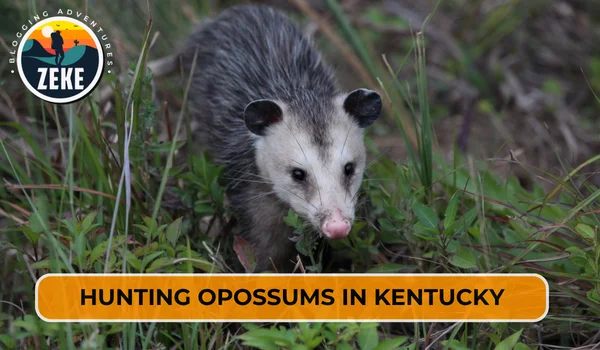
| Species | Dates |
| Opossum | Oct 01 – Feb 29 |
Woodcock Season
| Species | Dates |
| Woodcock | Oct 28 – Dec 13 |
Snipe Season
| Species | Dates |
| Snipe | Sep 20 – Oct 29, Nov 23 – Jan 28 |
Teal Season
| Species | Dates |
| Teal | Sep 16 – Sep 24 |
Rail Season
| Species | Dates |
| Rail | Sep 01 – Nov 09 |
Gallinule Season
| Species | Dates |
| Gallinule | Sep 01 – Nov 09 |
Sandhill Crane Season
| Species | Dates |
| Sandhill Crane | Dec 04 – Jan 28 |
Wood Duck Season
| Species | Dates |
| Wood Duck | Sep 16 – Sep 20 |
Crow Season
| Species | Dates |
| Crow | Sep 01 – Nov 07, Jan 04 – Feb 28 |
Falconry Season
| Season | Dates |
| Falconry | Sep 01 – Mar 30 |
Canada Goose Season
| Species | Dates |
| Canada Goose | Sep 16 – Sep 30, Nov 23 – Feb 15 |
Duck Season
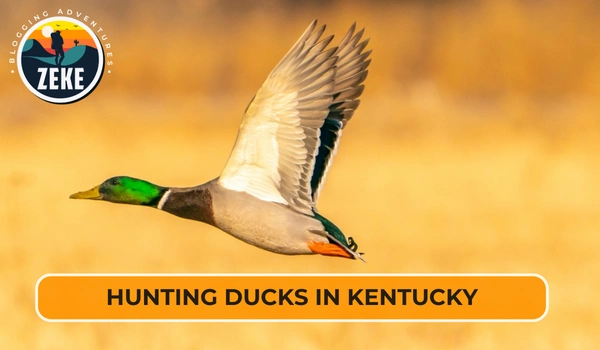
| Species | Dates |
| Duck | Sep 23 – Sep 26, Dec 07 – Jan 31 |
Merganser Season
| Species | Dates |
| Merganser | Sep 23 – Sep 26, Dec 07 – Jan 31 |
Coot Season
| Species | Dates |
| Coot | Sep 23 – Sep 26, Dec 07 – Jan 31 |
Youth Waterfowl Season
| Season | Dates |
| Eastern Zone | Nov 04 – Nov 05 |
| Western Zone | Feb 03 – Feb 04 |
Kentucky Hunting License Information
Hunting in Kentucky is a privilege, but it comes with great responsibility. All hunters must have a valid license to legally hunt – both residents and non-residents alike.
To obtain one, you’ll need proof of age, residency status, and hunter education certification (if applicable). You also must pass a background check and pay the appropriate fees; licenses vary depending on the type of game being hunted as well as its duration.
A resident yearly hunting license costs $27 while a non-resident yearling hunting license costs $150.
It’s important to be aware of additional regulations when hunting in Kentucky: wearing blaze orange clothing during certain seasons is required by law; firearms use should always abide by local laws and private property rights should be respected at all times.
Familiarize yourself with any extra restrictions or rules specific to your area before heading out into the field for an enjoyable experience.
Where Can You Hunt in Kentucky?
For the avid hunter, Kentucky is an ideal destination. Boasting a range of game species such as white-tailed deer, wild turkey, squirrels, rabbits, and waterfowl – there’s no shortage of opportunities for outdoor exploration.
With plenty of public lands like state forests and wildlife management areas available to hunt in legally (with their own set regulations), there are also countless private hunting clubs and preserves that offer a more intimate experience without as many restrictions.
So whether you’re looking for something secluded or want to join in with others on your adventure – the Bluegrass State has it all.
Public Hunting Places in Kentucky
Daniel Boone National Forest
Hunting in the Daniel Boone National Forest is an experience like no other. There’s a bounty of wildlife – from white-tailed deer and wild turkey to smaller game such as squirrels and rabbits.
Waterfowl are also plentiful during their season, so you can stock your freezer with some delicious eats. Whether you prefer bowhunting or muzzleloader hunting, there’s something for everyone here.
Plus, the scenery is incredible; towering trees sway in the breeze while rolling hills provide a picturesque backdrop on your journey through nature’s wonderland – it doesn’t get much better than this.
Pennyrile State Forest
Pennyrile State Forest is a great place to hunt in Kentucky. When planning your hunt in this forest, be sure to familiarize yourself with the regulations set by the Kentucky Department of Fish & Wildlife Resources.
You’ll need a valid hunting license and any applicable permits or stamps before embarking on your adventure. Certain areas may be off-limits due to safety issues or conservation efforts – so keep an eye out for signs and restrictions.
The diverse terrain found in Pennyrile State Forest is perfect for hunters of all kinds; from flat open fields, rolling hills, and deep ravines – there’s something suitable no matter what type of hunter you are. Make sure to wear proper clothing and gear that can handle different conditions as well as bug repellent.
With an abundance of wildlife ranging from deer, turkey, quail, squirrels, rabbits, and other small game inhabiting its 15,000+ acres – success is just around the corner when hunting in this great area.
Kentucky Ridge Forest WMA
Kentucky Ridge Forest wildlife management area offers a variety of game to hunt, including deer, turkey, small game, and waterfowl. The topography varies greatly with hardwood ridges, wetlands, and agricultural fields providing plenty of cover for your next hunt.
For bowhunters looking to get in on the action, there are several designated archery-only areas throughout the forest where they can showcase their skills. Be sure to check out any regulations before going as there may be restrictions on when and where you can use a bow.
And don’t forget about duck season! There are blinds available for rent that provide great concealment while waiting for your prey.
Jefferson National Forest
Jefferson National Forest is a haven for anyone hunting in Kentucky. Spanning 1.8 million acres, this lush landscape offers incredible opportunities to spot game animals like deer, bear, turkey, and grouse – all while taking in its majestic mountains, valleys, and streams.
Whether you’re an experienced bow hunter or just starting out with rifle hunting; the trails provide plenty of places to set up camp before embarking on your hunt of a lifetime.
Safety should always be a top priority when traversing through Jefferson National Forest; so make sure you brush up on regulations and wear the proper gear for any outdoor activity. But above all else: remember to be respectful towards other hunters as well as nature itself.
Kentenia State Forest
Kentenia State Forest is a paradise for hunters, hikers, and nature lovers. With over 16,000 acres of diverse terrain from wooded hills to rugged mountaintops, it’s the perfect spot to explore. You can find a wide variety of wildlife here too – deer, wild turkey, black bear, and even bobcats.
If you’re planning on hunting in Kentenia State Forest, be sure to check out the regulations set by the Kentucky Department of Fish & Wildlife Resources first. Always wear blaze orange while hunting so you stay safe and visible. Camping, fishing, or bird-watching are also great activities available in this beautiful forest. Don’t forget your binoculars too!
Private Hunting Places in Kentucky
In Kentucky, you’ll find several private hunting clubs and ranches with exclusive grounds full of access. Enjoy amenities such as cozy cabins, bunkhouses, restaurants, and lodges – all designed to make your hunt more enjoyable.
Plus, their well-maintained trails and roads will get you quickly from point A to B so that nothing stands between you and success out in those wilds. However, it’s essential to respect and follow the rights of private hunting places in Kentucky.
